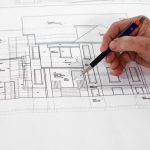What types of home office improvements are subject to depreciation? Depreciation is a crucial concept when it comes to understanding the financial impact of home office improvements.
Whether it’s furniture, fixtures, or technology, certain upgrades can qualify for depreciation and play a significant role in tax planning and financial management. This article will delve into the details of depreciation for home office improvements, including eligible and non-eligible improvements, different methods of calculation, IRS rules and regulations, as well as tips for maximizing depreciation benefits.
Depreciation is the gradual decrease in the value of an asset over time due to wear and tear, technological obsolescence, or other factors. When it comes to home office improvements, understanding how depreciation applies can have important implications for tax deductions and long-term financial planning. Eligible improvements such as furniture, fixtures, and technology can be depreciated over time to accurately reflect their diminishing value.
In this article, we will explore the concept of depreciation in relation to home office improvements. We will define depreciation and its impact on the value of these upgrades over time. Additionally, we will discuss eligible and non-eligible home office improvements for depreciation purposes, along with the different methods for calculating depreciation and the IRS guidelines for documentation. Understanding these aspects is crucial for maximizing the benefits of depreciation while complying with tax regulations.
Understanding Depreciation
Depreciation is an important concept to understand when it comes to home office improvements. It refers to the decrease in value of an asset over time, and this reduction in value can be used for tax purposes. When it comes to home office improvements, understanding depreciation can have significant financial implications.
Defining Depreciation
Depreciation is the allocation of the cost of a tangible asset over its useful life. This means that instead of deducting the entire cost of an asset in a single year, the cost is spread out over several years as the asset continues to provide value to the business. In the context of home office improvements, this could include items such as furniture, fixtures, and technology that are essential for conducting business from a home office.
Impact on Home Office Improvements
Understanding depreciation is crucial for home office improvements because it allows individuals to recoup some of the initial cost of these investments over time. As these improvements are used for business purposes, they can be considered assets that gradually lose value as they age. By depreciating these assets, individuals can lower their taxable income and reduce their overall tax liability.
It is essential to determine what types of home office improvements are subject to depreciation because not all expenses related to home offices may qualify for this tax benefit. In general, items that have a useful life beyond one year and are exclusively used for business purposes may be eligible for depreciation.
These could include items like computers and printers, furniture such as desks and chairs, and even certain building improvements that directly impact the operation of a home office. Understanding which home office improvements meet these criteria is crucial for accurate financial planning and tax reporting.
Eligible Home Office Improvements
Depreciation is an important concept to understand when it comes to home office improvements, especially for tax purposes and financial planning. Essentially, depreciation refers to the reduction in value of an asset over time due to wear and tear, usage, or obsolescence. When it comes to home office improvements, certain types of assets are eligible for depreciation, while others are not.
Furniture
One of the most common types of home office improvements subject to depreciation is furniture. This includes desks, chairs, bookshelves, filing cabinets, and other furnishings essential for a functional workspace. The IRS allows for the depreciation of these items over their useful life, which is usually determined based on their expected longevity and durability.
Fixtures
In addition to furniture, fixtures within a home office may also qualify for depreciation. This can include built-in shelving units, lighting fixtures, window treatments, and other permanent installations that contribute to the functionality and aesthetics of the space.
Technology
Another category of eligible home office improvements subject to depreciation is technology-related assets. This can encompass computers, printers, scanners, monitors, software programs, and any other technological equipment used for business purposes. It’s important to keep detailed records of the cost and usage of these items in order to accurately calculate their depreciation over time.
It’s important for individuals with home offices to understand what types of improvements are subject to depreciation in order to maximize their tax benefits and effectively plan for future expenses related to maintaining a functional workspace. Working with a tax professional can provide valuable guidance on navigating the IRS rules and regulations regarding depreciating home office improvements.
By keeping detailed records and understanding the eligibility criteria for different types of assets, individuals can optimize their depreciation benefits while ensuring compliance with relevant tax laws.
Non-Eligible Home Office Improvements
General maintenance and repairs are essential for keeping a home office in good condition, but they typically do not qualify for depreciation. These types of improvements are considered routine expenses necessary for maintaining the functionality and safety of the workspace. Examples of non-eligible home office improvements include painting, HVAC repairs, roof maintenance, and other regular upkeep tasks.
The reason general maintenance and repairs are not subject to depreciation is that they are not considered capital improvements that enhance the value or extend the life of the property. Instead, these expenses are viewed as ongoing operational costs that occur regularly to keep the home office in working order. As such, they are typically deducted as ordinary business expenses rather than being depreciated over time.
It’s important for home-based business owners to differentiate between eligible and non-eligible home office improvements when it comes to tax planning and financial reporting. While general maintenance and repairs cannot be depreciated, it’s crucial to keep accurate records of these expenses for tax deduction purposes. By understanding the distinction between depreciable improvements and regular maintenance costs, individuals can effectively manage their finances and maximize their tax benefits while operating a successful home office business.
Understanding the types of home office improvements that do not qualify for depreciation is just as crucial as knowing which ones do. By staying informed about IRS regulations and guidelines related to depreciation, home-based business owners can make informed decisions about how to allocate their resources towards various improvements while optimizing their tax benefits.
Depreciation Methods
When it comes to calculating depreciation for home office improvements, there are several methods that can be used. Each method has its own nuances and considerations, so it’s important to understand the differences between them in order to choose the most advantageous approach for your specific situation. Here are the different methods of calculating depreciation:
1. Straight-Line Method: This is the most commonly used method for depreciating assets, including home office improvements. It involves spreading the cost of the improvement evenly over its useful life. The formula for this method is (Cost of Asset – Residual Value) / Useful Life.
2. Double-Declining Balance Method: This method allows for a higher depreciation expense in the earlier years of an asset’s life, with the depreciation amount decreasing each year. It can be beneficial for assets that lose their value quickly in the early stages of use.
3. Units of Production Method: This method calculates depreciation based on the actual usage of the asset. For home office improvements, this could be applicable to items like a printer or copier, where usage directly correlates with wear and tear.
Understanding these different methods is crucial when it comes to determining how to depreciate your home office improvements effectively. The method you choose can have a significant impact on your tax obligations and financial planning, so it’s important to carefully consider which approach aligns best with your specific circumstances and goals.
Each method has its own set of requirements and considerations, so consulting with a tax professional is advisable to ensure compliance with IRS rules and regulations while maximizing your depreciation benefits.
Overall, choosing the right depreciation method for your home office improvements can directly impact your financial bottom line and tax liability. By understanding and utilizing these different approaches effectively, you can make informed decisions about how to allocate costs over time while reaping the full benefits of available tax deductions and credits.
IRS Rules and Regulations
Depreciation for home office improvements is subject to specific rules and regulations outlined by the IRS. When it comes to claiming depreciation on home office improvements, it is essential to understand the guidelines set forth by the IRS and the documentation required for compliance. The IRS provides specific guidance on what types of home office improvements are eligible for depreciation and how to calculate and report them accurately.
Under the IRS rules and regulations, eligible home office improvements that are subject to depreciation include furniture, fixtures, equipment, and technology used specifically for business purposes. These items must have a determinable useful life beyond one year in order to qualify for depreciation. Additionally, any structural changes or modifications made to the home office space, such as adding a built-in bookcase or renovating the space for business use, may also be subject to depreciation.
In order to claim depreciation on eligible home office improvements, taxpayers must maintain detailed records and documentation. This includes receipts and invoices for the purchase of qualifying assets, along with records of when they were placed in service and how they were used for business purposes.
It is important to accurately track and document these expenses in order to support any claims for depreciation on home office improvements during tax filing. Working with a tax professional can also be beneficial in ensuring compliance with IRS rules and regulations related to depreciating home office improvements.
Understanding the IRS guidelines for depreciating home office improvements is crucial for tax planning and financial management purposes. By following these rules and maintaining accurate documentation, taxpayers can maximize their depreciation benefits while staying compliant with IRS regulations. Ultimately, being aware of what types of home office improvements are subject to depreciation can help individuals make informed decisions about their business expenses and tax liabilities.
Importance of Depreciation
Depreciation is a crucial concept when it comes to home office improvements, as it directly impacts the value of these assets over time. Understanding what types of home office improvements are subject to depreciation is essential for both tax purposes and financial planning. Properly depreciating these improvements can result in significant benefits for individuals who work from home.
When it comes to eligible home office improvements that qualify for depreciation, several items fall under this category. These may include:
- Furniture such as desks, chairs, and bookcases
- Fixtures like built-in cabinets and shelving
- Technology such as computers, printers, and software
It is important to note that not all improvements made to a home office are subject to depreciation. Some non-eligible home office improvements include general maintenance and repairs. For example, painting the walls or fixing a leaking faucet would not qualify for depreciation.
To maximize the benefits of depreciation for home office improvements, individuals should familiarize themselves with the different methods of calculating depreciation such as straight-line, double-declining balance, and units of production. Keeping detailed records of all eligible improvements and working with a tax professional can also help in maximizing the depreciation benefits.
Properly understanding depreciation for home office improvements is crucial not only for reducing tax liabilities but also for effective financial planning. By taking advantage of the depreciation rules and regulations set forth by the IRS, individuals can make informed decisions about their home office investments and ensure they are getting the most out of their assets.
Maximizing Depreciation Benefits
When it comes to home office improvements, understanding how depreciation applies is essential for maximizing tax benefits and financial planning. Depreciation refers to the gradual decrease in the value of an asset over time, and it can have a significant impact on the cost recovery of home office improvements. Knowing which types of home office improvements are subject to depreciation is crucial for accurately reporting expenses and maximizing deductions.
The types of home office improvements that are subject to depreciation include furniture, fixtures, and technology. Furniture such as desks, chairs, and shelves are considered depreciable assets, as they have a limited useful life and are expected to decline in value over time. Fixtures such as built-in shelving or lighting fixtures can also be depreciated. Additionally, technology equipment such as computers, printers, and software can qualify for depreciation.
It is important to note that not all home office improvements are eligible for depreciation. General maintenance and repairs do not qualify for depreciation since they are considered ongoing expenses rather than long-term investments. However, substantial renovations or upgrades that enhance the functionality or increase the value of the home office space may be eligible for depreciation. Understanding the distinction between eligible and non-eligible improvements is key to making informed decisions about tax deductions and financial planning strategies.
Conclusion
In conclusion, understanding depreciation for home office improvements is essential for individuals who want to maximize their tax benefits and plan for the financial longevity of their assets. By accurately depreciating eligible improvements such as furniture, fixtures, and technology, taxpayers can reduce their taxable income and recoup a portion of the cost of these investments over time.
It is important to note that general maintenance and repairs do not qualify for depreciation, so individuals should be mindful of which improvements are subject to this tax benefit.
Furthermore, familiarizing oneself with the various methods of calculating depreciation, such as straight-line, double-declining balance, and units of production, can help taxpayers determine the most advantageous approach for their specific situation. Additionally, adhering to the IRS rules and regulations regarding documentation and record-keeping is crucial in order to substantiate any depreciation claims in the event of an audit.
To ensure that they are maximizing their depreciation benefits, individuals are encouraged to work with a tax professional who can provide guidance on proper record-keeping practices and assist in developing a comprehensive strategy for depreciating home office improvements. By taking these proactive steps, taxpayers can harness the full potential of depreciation and make informed decisions that positively impact their financial well-being in the long run.
Frequently Asked Questions
How Do You Depreciate Home Office Improvements?
Home office improvements can be depreciated over time using the Modified Accelerated Cost Recovery System (MACRS) method. This involves determining the cost basis, useful life, and depreciation method for each improvement made to the home office.
What Expenses Qualify for Home Office Deduction?
Expenses that qualify for the home office deduction include utilities, mortgage interest or rent, insurance, repairs and maintenance, property taxes, and depreciation. However, these expenses must be directly related to the portion of the home used as a home office.
What Does the IRS Consider Home Improvements?
The IRS considers home improvements as substantial renovation or expansion projects that add value to the home or prolong its useful life. This includes adding a new room, renovating an existing space, installing a new roof or heating/cooling system, among others. These improvements are different from routine repairs and maintenance.

I’m thrilled to have you here as a part of the Remodeling Top community. This is where my journey as an architect and remodeling enthusiast intersects with your passion for transforming houses into dream homes.





